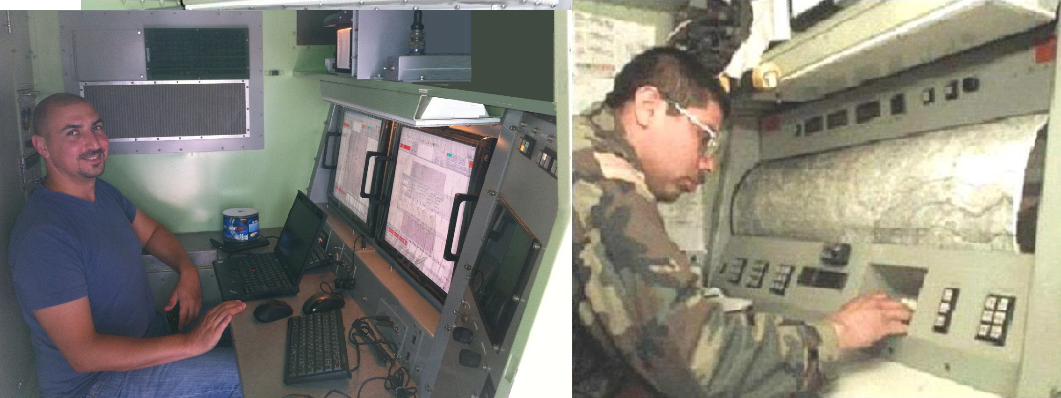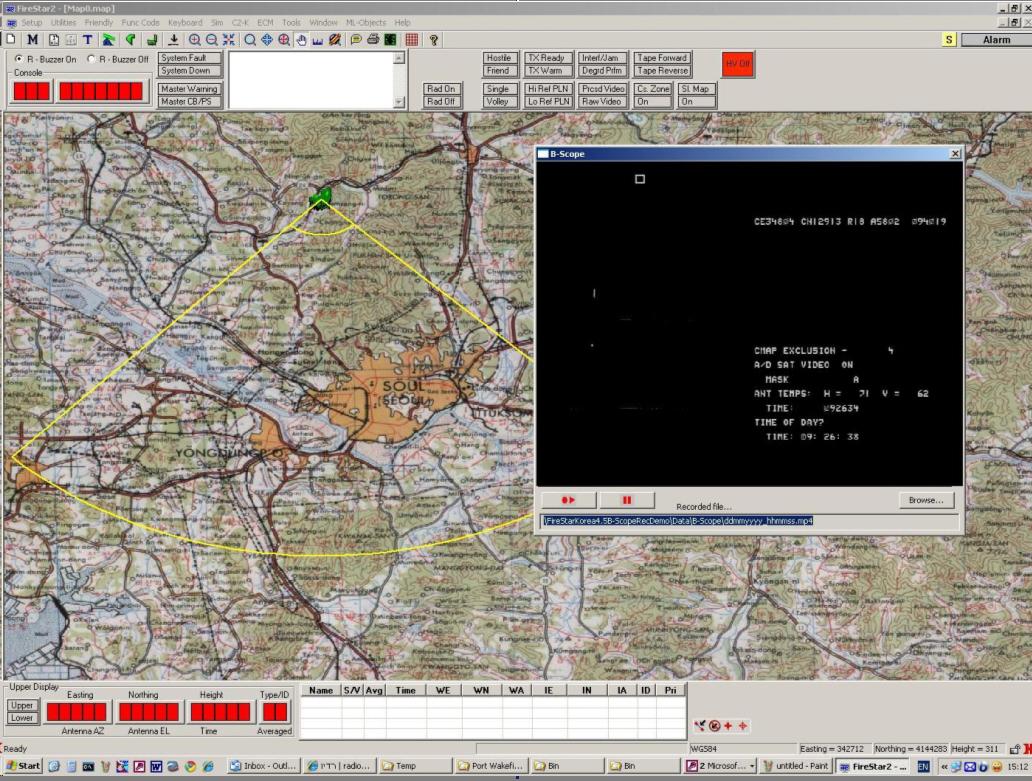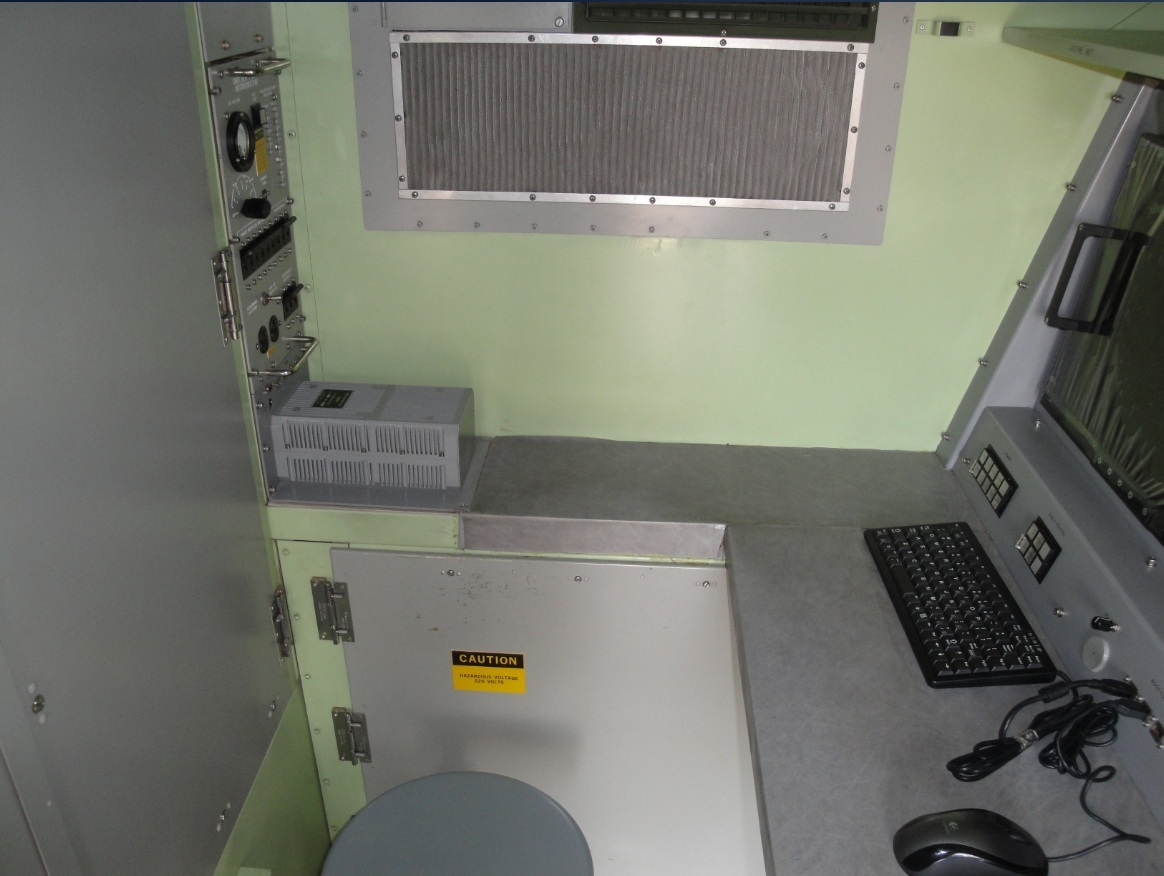![]()
BES Electronic Systems
![]()
![]()
TPQ-36/37
radars, fielded in 1981, are excellent battlefield proven Radar
Systems. BES Electronic Systems' Radar Operational Control System (ROCS) improves the
performance of these outstanding radars at minimum cost.

TPQ-36, TPQ-37 New WLU v.s. Existing WLU
|
LEGACY TPQ-36/37 RADARS CAPABILITIES |
TPQ-36/37 WITH ROCS CAPABILITIES |
|
FMS versions of the TPQ-36 and
TPQ-37 around the world, use analogue mapping with mechanical DRUM
and topographic paper maps. The Users of these WLR systems do not use
'Automatic Height Correction (AHC) based on Digital Terrain Map data. Therefore,
they must perform Manual Height
Correction in order to accurately locate enemy Mortars and Artillery.
|
TPQ-36/37 radar with ROCS is faster and more accurate. Using Digital Terrain Elevation Data Level II (DTED level II) with powerful processors make these radars locate, display and communicate 10 Weapons (or more) per minute.
Whenever a new target arrives, it is automatically height corrected, processed and sent to remote users without operator interaction. |
| The Legacy TPQ-36 or TPQ-37 radar is built for one Operator. During Combat it is necessary to have more operators and technicians in the radar Shelter. In fact, the new US ARMY shelters have two workstations with a option to operate the radar from remote. |
The upgraded OCG, includes two Workstations with two 19" BARCO LCD
displays. The ROCS system enables additional Laptop Workstations running
by Operators or technicians inside or outside the radar shelter.
The User may add additional workstations on Laptops via the system LAN.
The left side Workstation is called ‘Weapon Location Display’. It is used for radar operation, target acquisition, and weapon location. The right side Workstation is called ‘Fire Mission Display’. It is used by radar Officer for management, Fire mission, and communication purposes. The two Workstations allow radar Operators to share the workload and increase the throughput of target detection and data communication to headquarters and batteries. |
|
ROCS Main SCREEN |
|
| TPQ-36/37 Radar stores in its permanent buffer only 99 targets. |
TPQ-36/37 Radar with ROCS tracks and stores up to 500 hostile targets. |
| Legacy TPQ-36/37 Radar Shelter Operators might be killed by a direct enemy fire on the radar | For protection, Operators may operate the TPQ-36/37 Radar with ROCS from
remote Laptops using
LAN or Wi-Fi. |
| In Friendly mode, the legacy TPQ-36/37 radar has only 3 friendly buffers. | TPQ-36/37 Radar with ROCS can store 25 Batteries and 100 friendly
rounds. |
|
FRIENDLY REGISTRATION SCREEN |
|
| High skilled operators are needed for the operation of the legacy TPQ-36/37 Radars. They must memorize and use Function Codes, and enter the system (manually) lot of parameters. Threfore the Weapon detection rate depends on the Operator's proficiency. | TPQ-36/37 Radar with ROCS automates the operation and reduce the
proficency requirements on operators |
| Legacy TPQ-36/37 Radar operator can define up to 6 Artillery zones | TPQ-36/37 Radar with ROCS provides up to 50 Artillery Zones with
priorities. |
| The radar connectivity to Command & Control is via TACFIRE Fire Net interface. | TPQ-36/37 Radar Shelter with ROCS is an open architecture. Implementation of any desired protocol to communicate digital data to other radar systems, C2 and Batteries, is possible. |
| Initialization and program Loading of the legacy TPQ-36/37 Radars is slow due to programs loading time using Raymond Cassettes | Radar with ROCS has Automatic Initialization and program loading. |
|
Radar Initialization Screen |
|
| Existing
Shelter 28DC power supply has limited power (17 Amps). It can support only 2 analog radios. The system does not support communication when the Generator is down. |
TPQ-36/37 Radar Shelter with ROCS includes a 50 Amps Power Supply/UPS and
Battery Bank Charger. |
| In the Legacy systems on paper from radar printer are available for debriefing. |
TPQ-36/37 Radar with ROCS collects and records
comprehensive digital data for debriefing (hostile Targets,
Friendly targets, C2 messages, Printer log, B Scope
recorded video etc'., for later debriefing. |
| Training with Field Exercise Mode (FEM) is for one Operator. |
ROCS makes possible to train a group of Users in a remote classroom via LAN,
(running FEM). A Classroom Simulator for Artillery school is also available. |
|
The radar requires UTM maps on WGS-84 Datum. |
TPQ-36/37 Radar with ROCS can be programmed to use
maps based on different Datum and output Weapon locations and
impacts in any coordinate system. |
| Legacy TPQ-36 Shelter is not interchangeable with TPQ-37 Shelter. | The Shelter of TPQ-36/37 with ROCS is fully interchangeable with the TPQ-37
Shelter. The ROCS can load radar programs of both systems. |
| Legacy TPQ-36/37 includes low reliability assemblies. | TPQ-36/37 with ROCS does not include Raymond Cassette and DRUM. The system may work without existing B-Scope and Printer assemblies. |
 B-Scope Window on the LCD Display |
|
![]()

DMKP LRU Installation
ROCS Processor LRU
255x131x100[mm]
![]()
![]()
Existing 24VDC Shelter Power Supply (rated 400Watt). is designed to support two analog radios. Unfortunately, new digital radios requires more power. ROCS Power Supply/UPS (ROCS-PSU) solves this shortcoming.
ROCS-PSU is an integral part of ROCS system. It supplies 28VDC 1250Watt to radios and the ROCS equipmentf.
The unit has three functions:
- Power Supply - For the Shelter radios and ROCS equipment..
- Battery Charger - The ROCS-PSU charges 24VDC External Battery Bank. Battery charging is done in parallel to supplying DC to
radio sets and the ROCS itself.
- UPS Unit - for emergency and for ‘On the Move’ capability.
The ROCS-PSU gets its power from two sources;
- DC power from External Battery Bank installed on the truck.
- 115VAC 3Ø 400Hz Generator via the Shelter’s PDU.
The Battery bank is GFE batteries of 4 x 12VDC, 120hA. This provides energy of 240hA. During normal operation the ROCS-PSU is powered from the radar generator. When the generator is Off the ROCS-PSU gets its power from the battery bank. The ROCS-PSU (UPS) power is sufficient to keep live three radios, and the ROCS during ‘On The Move’ or power trip periods.
Note: The ROCS system draws approximately 6Amp from the ROCS-PSU supply.
PSU 28VDC Power Supply/UPS/Battery Charger installation in the Shelter PSU Battery Installation on Truck
Dimensions: Width- 180 mm, Height- 271 mm, Depth- 377 mm. Weight: 13 Kg. Efficiency: 85% nominal
![]()
Copyright © 2011.
BES Systems Ltd. 14 Moshe Levi St. Rishon Unit 30 Israel, CAGE SK477
Tel: +972-3-5714998 Fax:+972-3-571-5085 email: asherlav@bes.co.il
![]()